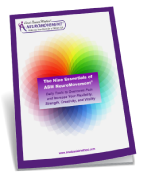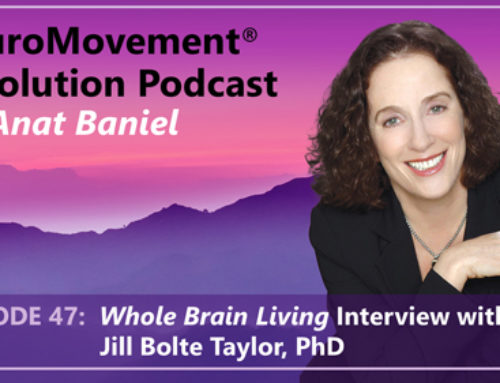What Is the Good News About Scoliosis?
Saturday, June 29, 2013, is the first International Scoliosis Awareness Day. It’s a day to “create positive, public awareness about scoliosis, promote education, advocacy campaigns, and bring people together with the condition.” In honor of this day, I‘d like to share possibilities for breakthrough improvements of function and for reduction of pain using noninvasive techniques. These techniques take advantage of the brain’s ability to change itself and how the body moves, which I discovered from my work with children and adults with this condition for over 30 years.
“Scoliosis affects 2-3 percent of the population, or an estimated 6 to 9 million people in the United States. Scoliosis can develop in infancy or early childhood. However, the primary age of onset for scoliosis is 10-15 years old, occurring equally among both genders.” (Source: National Scoliosis Foundation, June 2007.)
When scoliosis is not severe, usually nothing much is done for it. For more severe scoliosis, the typical treatments are usually different forms of bracing and exercise. When the scoliosis is severe, back surgery to immobilize portions of the spine is recommended. People with scoliosis often experience back, hip, neck, and shoulder pain. Scoliosis can also lead to reduced mobility and challenges with breathing and balance, as well as other serious complications such as digestive issues, lung and heart damage, and more.
Is Scoliosis a Muscular-Skeletal Disorder?
Scoliosis is primarily seen as a muscular-skeletal disorder, which it is. What I have come to realize is that scoliosis is almost always a neuro (brain)-muscular-skeletal disorder. The spine is a live system, not an inanimate object. In other words, when an inanimate object is curved, the way to straighten it will follow very different rules than when we want to help straighten a spine that is curved. For example, if you laid a chain made of metal loops on the floor in the shape of an “S,” to straighten the curve, you would pull on either end of the chain in opposite directions to make it straight. However, as many of you have experienced, pulling on both ends of the spine will almost always give limited outcomes, can aggravate the pain, and at times, actually result in increased, rather than decreased, curvature.
The spine is a part of a highly complex, dynamic system (our whole body) that is ultimately controlled by the brain. And the brain gives the commands to muscles whether to contract or not, so it is the brain that we need to inform and change when we want to reduce the curvature in the spine and increase mobility, agility, and comfort. And the brain follows very different rules for change than mechanical, inanimate objects.
Today, because we know that the brain can change itself throughout life, there are ways (sometimes counterintuitive to what we normally do) that will help reduce the symptoms and at times, the degree of the scoliosis.
You Don’t’ Need a Straight Spine to be Flexible, Powerful, and Comfortable in Your Body
Rather than focusing on the tight muscles in the back and on trying to straighten the curvature of the spine through stretching exercises, traction, or immobilization with braces, Anat Baniel Method® NeuroMovement® focuses on the brain, where all the body’s movements are organized. We do not attempt to straighten the spine directly. Through gentle movements and increased sensitivity and awareness, we help provide the brain with new information, creating new patterns of movement in the spine and the whole back.
What I have often seen in my experience of working with people with scoliosis is that the back begins to move more freely in ALL directions and over time the curvature tends to decrease. The brain stops treating the back as if it were one chunk, but rather built of many movable parts. Movements like bending, arching, twisting, and general balance and breathing all become easier. Below is a story that I received from a girl who was diagnosed with scoliosis at the age of 10 and who came to our Anat Baniel Method (ABM) Center for treatment.
The Story of Emily, In Her Own Words
In a different life, I was a ten-year old girl terrified of her future. When the orthopedist diagnosed me with an S-shaped scoliosis curve, I sat in his office and absorbed as many blurred words as I could. He held up chunks of plastic and metal and talked of possible surgery if necessary in the distant future. I left the office confused, upset, vulnerable, and wearing a more flexible back brace made of plastic, stretchy fibers, and snaps. In the eyes of a child, such a restriction is punishment.
For the next two years, I continued to adapt my life to meet the limitations of my body. Around this time, I began to take a few dance classes a week to hopefully help my back. I expected success, but only in dreams did I ever make any progress with my technique. As my parents and I grew more concerned about my health and well-being, my curvature and rotation increased.
Then, in June of 2001, fate brought me to Anat Baniel. When a mutual friend of Anat and my family learned of my condition, she excitedly urged me to participate in a seminar to be held in Chicago. I now had a tough decision to make. Did I still have enough faith in the conventional treatment for scoliosis, or could I find the courage to start a journey with an unknown outcome? Frustrated that my brace was only adding to the existing curve, I grasped the opportunity.
I began seeing Anat every eight weeks in California for lessons. The change during and after each lesson was immediate and enormous. I discovered parts of my body that I never knew could move so freely. My breathing became much steadier as my rib cage and chest learned to be free. Anat also showed my back how to lie flat and twist with full range of motion, as well as my hips how to be loose to allow for better walking.
I continued dance more than ever and started to make tremendous improvement when I began the Anat Baniel Method. With all of these physical changes come emotional changes to follow. With Anat’s work, I am more confident, happy, and ready to seize opportunities I might never have considered before. I am proud to say my life began at twelve.
With ABM NeuroMovement®, we recognize that the structure of the back does not need to be perfect or symmetrical in order for the person with scoliosis to have full functioning. To learn more about what you can do to take advantage of your own brain’s ability to improve how you move and feel, and to learn more about the Nine Essentials that can help you do it, read the article “Movement and Learning Based-Approach to Working with Scoliosis.”
Please share this information with others: This is good news for scoliosis!





